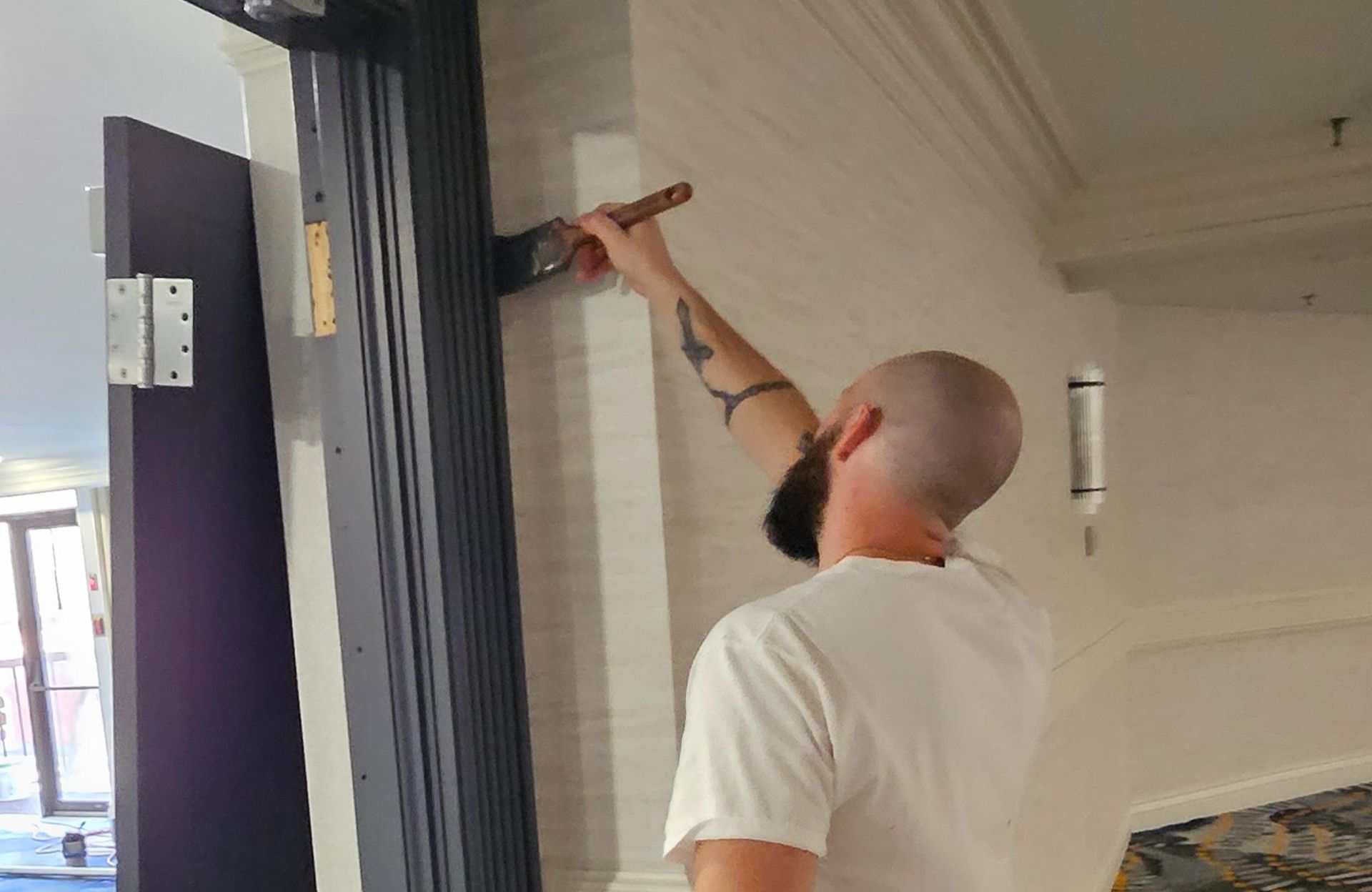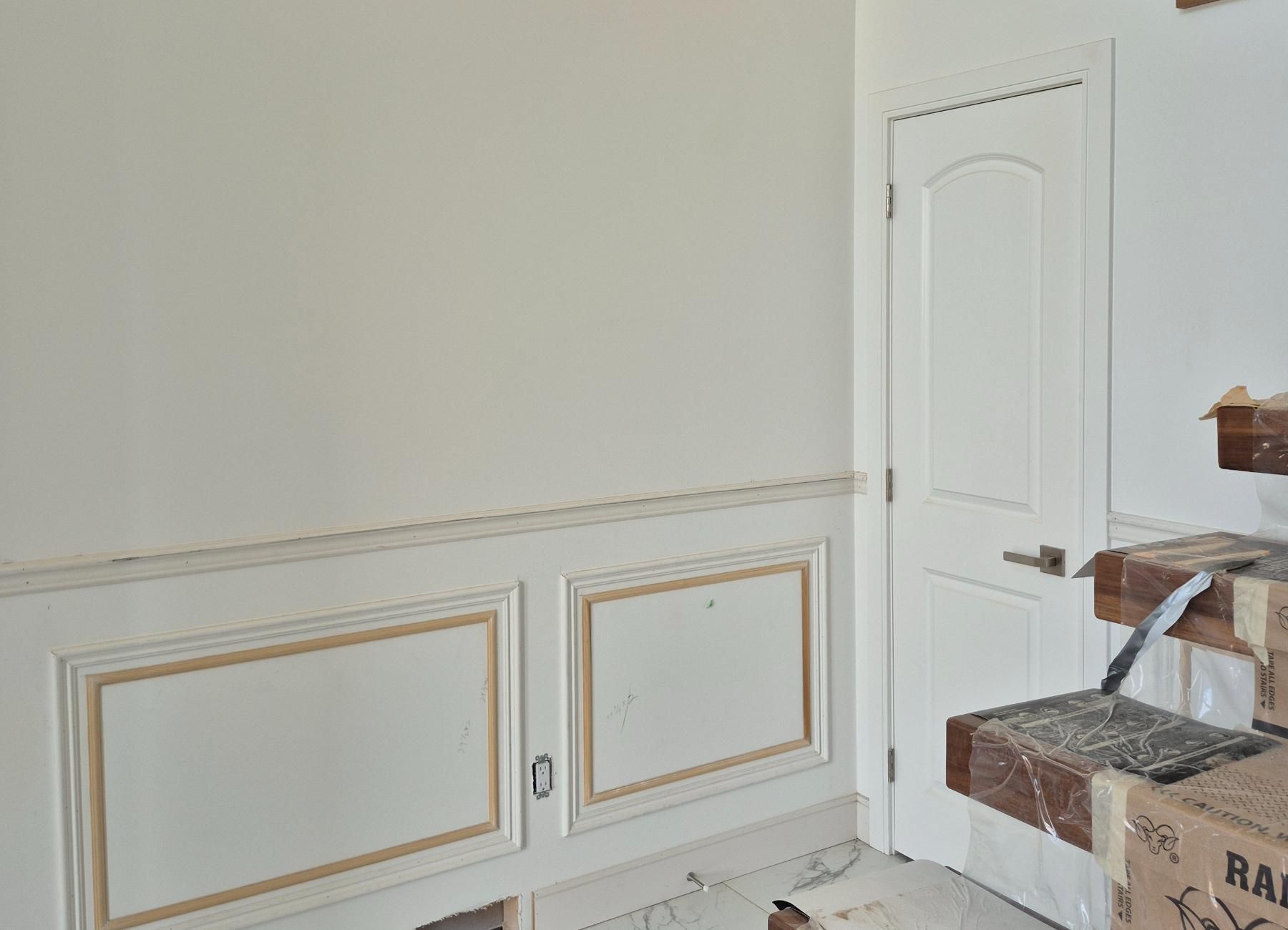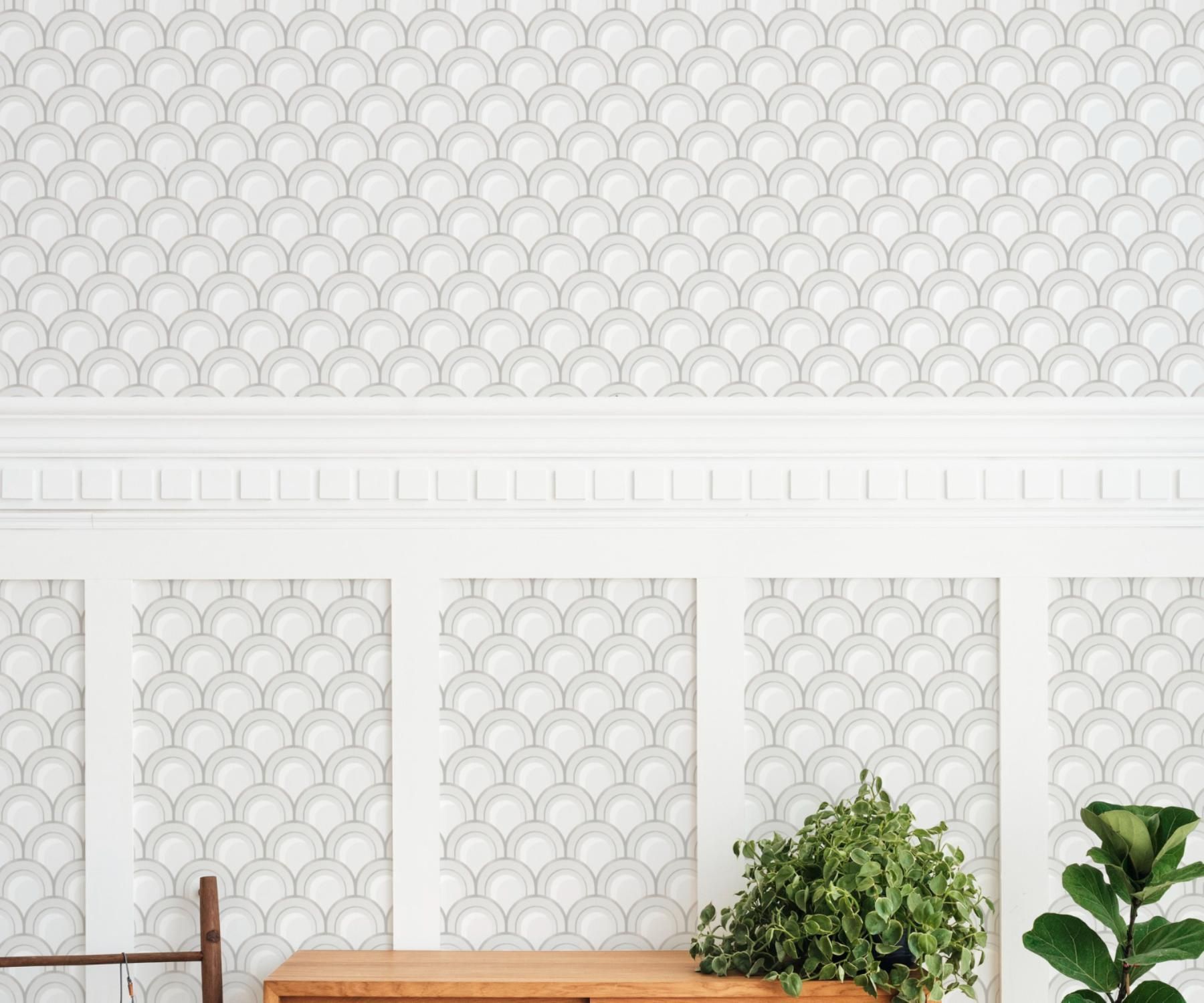Why Smart Property Managers Choose Tenant Improvement Painting First
Tenant improvement painting remains the cornerstone of successful commercial property renovations. Property managers who face the challenge of prioritizing leasehold improvements often find painting to be the most logical first step. Our experience shows that a fresh coat of paint can revolutionize a commercial space and make it more appealing to potential tenants while protecting the property's structural elements. Tenant improvements, or leasehold improvements, customize a leased commercial space to meet a tenant's specific needs.
Revive Painting & Wallpaper's team in Saskatoon recognizes that property managers need to balance visual appeal with budget constraints. Leading industry experts suggest repainting commercial buildings every seven to eight years to maintain their condition. Strategic painting serves as a budget-friendly tenant improvement that draws new occupants. The project's cost ranks among the most affordable options for property managers compared to other improvements. A properly executed tenant improvement project prepares the workspace to showcase brand identity and creates value for both tenant and landlord. Regular commercial painting services also reduce maintenance costs over time, which makes it a smart investment for proactive property managers.
Why Tenant Improvement Painting Is a Smart First Step
The right paint job can make or break your commercial property renovations. Property managers struggle to decide where to start their upgrades, but painting stands out as the best first step for several key reasons.
Sets the tone for all future upgrades
Paint work creates the foundation for all other tenant improvements. A well-executed paint job gives you a clean canvas that makes future upgrades look better. More than that, the right colors and finishes let commercial spaces showcase the tenant's brand identity and values through the property. A fresh coat of protective paint shows professionalism and attention to detail, which proves the property gets proper care.
Our team at Revive Painting & Wallpaper has seen how the original paint work shapes a space's design direction and guides choices about flooring, lighting, and fixtures. Quality painting protects surfaces and helps other improvements last longer. This protection becomes crucial in Saskatoon's weather, where buildings face tough seasonal changes that can wear down commercial properties.
Quickly improves visual appeal and tenant perception
First impressions can determine a property's success in commercial real estate. Fresh paint on the exterior creates an instant positive impact that could seal the deal with potential tenants. This visual upgrade changes the feel of a commercial space overnight – much faster than structural changes or mechanical updates.
Studies show tenants prefer to stay in buildings that look fresh and updated. A clean, modern appearance proves the property receives good care, which helps attract quality commercial tenants. Retail spaces with appealing fronts pull in more foot traffic, which boosts the tenant's business success.
Fresh interior paint modernizes outdated spaces and creates bright, welcoming environments that feel more spacious. These refreshed interiors boost tenant satisfaction and can lift employee morale and productivity in office settings.
Often the most cost-effective improvement
Paint jobs deliver the highest return on investment among tenant improvements. The numbers tell the story - quality interior painting can bring up to 107% return on investment, while exterior painting offers up to 55% ROI. These impressive returns make painting the smart first choice for any tenant improvement project.
Paint work happens quickly with minimal business disruption, unlike major renovations that can halt operations for weeks. Saskatoon property managers working with tight budgets find that tenant improvement painting gives them the biggest visual impact for their money.
Paint as a tenant improvement saves money long-term too. Regular paint maintenance costs less than fixing major damage and helps surfaces last longer. Yes, it is true that property managers who use strategic painting in their tenant improvement plans can ask for higher prices by showing they take care of their properties.
Our team at Revive Painting & Wallpaper has helped many Saskatoon property managers transform their commercial spaces through smart tenant improvement painting. Our experience backs up the data – starting with paint builds a strong foundation for property improvements, makes tenants happier, and gives exceptional value for every dollar spent.
How Painting Enhances Property Value and Marketability
Property managers in real estate know that looks drive value. Quality painting's connection to property marketability goes beyond esthetics. It shapes tenant acquisition, property valuation, and long-term profitability. Our team at Revive Painting & Wallpaper has seen how tenant improvement painting reshapes commercial spaces in Saskatoon and creates advantages in competitive markets.
Boosts curb appeal and first impressions
Your commercial property's exterior creates an immediate visual impact that shapes all other perceptions. Research shows people form quick first impressions that affect their decision-making in commercial real estate. A well-executed exterior paint job can make all the difference when marketing your commercial property in Saskatoon's competitive market.
Property valuation experts say a fresh exterior paint job can boost a commercial property's market value by 2-5%. This return on investment happens because potential tenants judge property quality based on how it looks outside. A clean, professionally painted facade shows professionalism and careful maintenance standards that carry over to interior spaces.
Research proves properties with professional exterior painting get more interest and better prices in the market. The psychological effect of a pristine look matters. Many commercial real estate agents confirm that fresh paint boosts curb appeal and reflects company's brand identity through carefully chosen colors and finishes.
Signals proactive property management
Property management quality affects how you attract and keep tenants. Our experience at Revive Painting & Wallpaper shows that tenant improvement painting sends a clear message about management standards. Regular painting schedules suggest thorough upkeep throughout the property. This raises both perceived and actual value.
Professional commercial painting creates spaces where tenants feel welcome and comfortable. Property managers who paint regularly see better tenant retention rates. Occupants connect refreshed environments with attentive management. This makes them less worried about maintenance issues and willing to pay higher rates for spaces that show consistent care.
Buildings with professional tenant improvement painting often get better appraisals than their competitors. Smart property owners don't wait for obvious wear. They use proactive painting schedules to keep spaces looking great and protect surfaces underneath. This approach shows potential tenants that owners value long-term relationships and invest in optimal conditions.
Helps attract higher-quality tenants
Your property's tenant quality directly affects profit and management ease. High-quality commercial painting creates spaces that appeal to selective businesses. These companies will pay premium rates for well-maintained environments. Clean, appealing surroundings boost tenant satisfaction and can extend lease durations while reducing costly turnover.
Commercial buildings with fresh, professional paint find tenants faster and stay vacant less. This edge matters in Saskatoon's evolving commercial market where businesses prioritize workspace quality for leasing decisions. Office buildings with modern, professional exteriors attract quality tenants who commit to favorable rental agreements.
The benefits go beyond initial attraction. Tenant improvement painting helps with retention strategies too. Our Saskatoon business clients report higher satisfaction after quality painting projects. Happy occupants show more commitment to their space and often renew leases instead of moving. This satisfaction leads to steady income and lower marketing costs for finding new tenants.
Saskatoon property managers can boost property value, attract quality tenants, and build a reputation for exceptional management through strategic tenant improvement painting. At Revive Painting & Wallpaper, we work with property managers to develop painting strategies that optimize these marketability benefits while delivering outstanding esthetic results.
Understanding the Role of Painting in Tenant Improvement Allowances
Tenant improvement allowances create a vital financial arrangement between commercial property owners and tenants. Your bottom line and property's appearance depend on how painting fits into these allowances. Our expertise in Saskatoon's commercial painting industry has helped many property managers navigate painting's role in tenant improvement plans.
When painting is covered under TIA
Most tenant improvement allowances cover painting as an eligible expense. Standard TIA packages list painting and wall coverings among common approved modifications. This makes perfect sense because painting beautifies and protects the property. The lease agreement terms and landlord's policies ultimately determine the coverage specifics for property modifications.
Property owners structure tenant improvement allowances in two ways - as rent percentage or dollar value per square foot of leased space. A standard office lease might include 5% or 10% tenant improvement allowance. This translates to around CAD 20.90 per square foot. Our team at Revive Painting & Wallpaper finds that painting projects fit these allocation parameters well, making them perfect for TIA funding.
Negotiating painting costs in lease agreements
Smart property managers emphasize painting as an economical improvement with substantial visual impact during lease negotiations. The agreement should describe which painting services qualify under the tenant improvement allowance. This prevents confusion later in the tenant relationship.
Tenant improvement allowances set maximum landlord contributions. Tenants pay extra costs beyond the allocated allowance unless negotiated differently. This applies to specialized finishes or extensive surface preparation. Our years serving Saskatoon's commercial properties show that clear discussions about painting specifications lead to smoother projects.
How painting fits into overall TI budgeting
Painting stands out as one of the most affordable yet influential modifications in tenant improvement budgeting. Unlike structural changes or mechanical upgrades, paint transforms spaces without major disruption or permits.
Property managers should recognize painting's dual advantages in their budgets. Paint enhances esthetics and protects structural elements. This protection reduces future repair costs, doubling the value of the original painting investment.
The tenant improvement allowance structure works for everyone - landlords boost property value while tenants get customized spaces. Saskatoon property managers looking to maximize their allowance value should start with professional commercial painting services. This delivers immediate visual impact and preserves budget for other needed modifications.
Planning a Tenant Improvement Painting Project in Saskatoon
A successful tenant improvement painting project needs good planning and attention to detail. The right preparation will give optimal results and keep tenants happy in Saskatoon's commercial spaces.
Assessing the current condition of the space
Your commercial property needs a detailed visual inspection to spot problems that might affect the paint job. You should look for cracks, peeling paint, uneven surfaces, or water damage signs before starting any work. Saskatoon's changing climate puts extra wear on commercial buildings. The weather speeds up damage, which makes getting the full picture crucial. Good surface preparation helps paint stick better and stops peeling, bubbling, or cracking later.
Choosing the right commercial painting contractor
The best way to find a reliable commercial painting contractor in Saskatoon starts with checking their credentials and past work. Revive Painting & Wallpaper's deep roots in Saskatoon's construction industry give us complete knowledge of local building rules and safety protocols for commercial properties. Expert contractors know commercial painting's fine points, including surface preparation methods that work best in different business settings.
Coordinating with tenants to minimize disruption
Good communication is the life-blood of painting projects in tenant-occupied buildings. Property managers should tell tenants about the work 2-4 weeks ahead. They need to explain what will happen, how long it will take, and how it might affect them. Smart scheduling proves to be one of the best ways to keep tenants happy during commercial painting. The work can happen after hours, on weekends, or in phases that move through the building step by step.
Selecting colors that match tenant branding
Your commercial property's colors tell visitors about the businesses inside. Using tenant brand colors helps send the right message and creates a unified look. Colors spark different feelings - blue suggests trust and professionalism, while green speaks of growth and peace. Revive Painting and Wallpaper helps pick colors that work for both tenant brands and the building's long-term appeal.
Ensuring compliance with local codes and permits
Saskatoon's rules say some painting projects need permits. You should know which jobs need paperwork and which don't. Basic fixes like painting and patching drywall usually don't need permits if they're just small repairs rather than big changes. But larger renovations that include painting might need proper documentation, especially in heritage buildings or when changing commercial spaces.
Long-Term Benefits for Property Managers
Quality painting serves as the life-blood of successful commercial property management strategies. This piece shows how a well-planned approach to painting brings benefits that go way beyond looks. Smart property managers who make painting their first priority in tenant improvement projects create strong foundations. These foundations boost future renovations and protect the building's structure.
The financial rewards of tenant improvement painting speak for themselves. Many renovations need big investments with uncertain payoffs. However, quality painting delivers exceptional value consistently. Interior work can give ROI figures up to 107%. Property managers can revolutionize spaces without emptying improvement budgets. On top of that, professional painting shows the quality of management. This directly shapes how tenants view the property and its marketability in Saskatoon's competitive commercial real estate world.
Smart planning with painting in tenant improvement allowances creates major advantages. Clear negotiations during lease agreements help both sides understand what to expect about painting specs and who handles what. Property managers know painting does two jobs at once. It refreshes the look and acts as preventive maintenance against Saskatoon's tough seasonal weather.
A full picture and professional execution make tenant improvement painting projects work. Property managers need to assess conditions, pick colors that match tenant's branding, and coordinate carefully to avoid business disruptions. These factors show why experienced commercial painting contractors are crucial. Revive Painting & Wallpaper has helped countless Saskatoon property managers turn ordinary commercial spaces into environments that draw and keep quality tenants.
The facts tell a clear story - tenant improvement painting should be the top priority to get the best results from renovation investments. Painting might look basic compared to complex upgrades. Yet its deep effect on tenant happiness, property value, and ongoing upkeep makes it the foundation of a commercial property's reputation. Property managers who grasp this concept gain an edge in Saskatoon's commercial real estate market. They create spaces that tenants love and competitors wish they had. Great property management starts with choices that mix immediate visual appeal and long-term protection - exactly what tenant improvement painting delivers.
Let Us Help
Want to improve your commercial property with strategic tenant improvement painting? Revive Painting & Wallpaper is Saskatoon's trusted commercial painting specialist, ready to turn your property management vision into reality. This piece shows why painting should be a priority in your tenant improvement strategy. Let us help you make it happen.
Our team brings decades of experience to every commercial painting project in Saskatoon. Property managers often struggle to balance tenant satisfaction with budget constraints. We've spent years in the local market and refined our approach to tenant improvement painting. The result? Maximum visual effect with minimal disruption to your tenants' operations.
Revive Painting & Wallpaper stands out because we completely understand commercial property needs. We work with property managers from the first meeting through project completion. Together, we develop custom painting solutions that improve marketability and protect structural elements. Our expertise goes beyond simple application. We guide you through color selection, finish options, and scheduling strategies that match your tenant improvement goals.
Your property's transformation begins with the decision to invest in tenant improvement painting. Choosing Revive Painting & Wallpaper gives you access to professionals who know both quality painting techniques and property management business needs. We work well with other contractors and respect tenant operations. Our results consistently go beyond expectations.
Our team adapts to your specific needs, whether you're preparing an empty space for new tenants or refreshing an occupied property. We take pride in clear communication, careful preparation, and perfect execution. Your tenant improvement painting project will run smoothly from start to finish.
Call Revive Painting & Wallpaper today to learn how our tenant improvement painting services can help your property stand out in Saskatoon's competitive commercial real estate market. We'll help you create spaces that attract quality tenants, earn premium rates, and build your reputation as an innovative property manager.
Key Takeaways
Smart property managers prioritize tenant improvement painting as their first renovation step because it delivers exceptional ROI while creating the foundation for all future upgrades.
• Painting delivers unmatched ROI: Interior painting offers up to 107% return on investment, making it the most cost-effective tenant improvement available to property managers.
• First impressions drive tenant quality: Fresh paint boosts curb appeal and signals proactive management, attracting higher-quality tenants willing to pay premium rates.
• Strategic timing minimizes disruption: Painting first sets the visual foundation for other improvements while being completed quickly with minimal business interruption.
• TIA integration maximizes budgets: Painting typically qualifies under tenant improvement allowances, allowing property managers to enhance spaces without depleting renovation budgets.
• Long-term protection reduces costs: Quality painting serves dual purposes—enhancing esthetics while protecting structural elements from Saskatoon's challenging seasonal conditions.
When executed strategically, tenant improvement painting transforms ordinary commercial spaces into environments that attract quality tenants, justify higher rental rates, and establish property managers' reputations for excellence in Saskatoon's competitive market.



